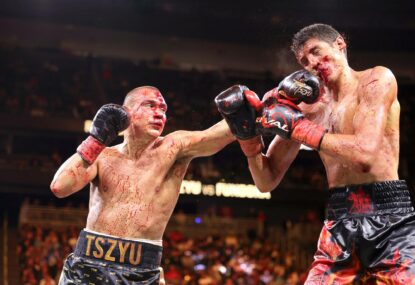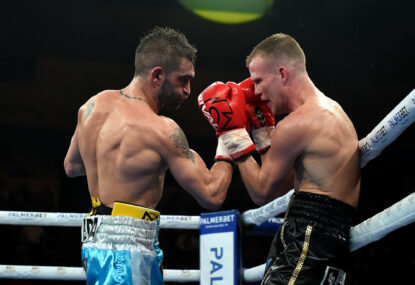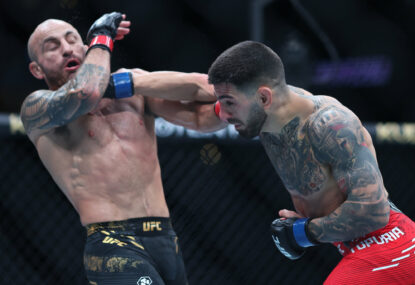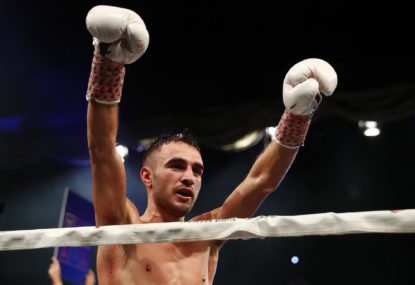Tyson Fury, fresh from his victory over Dillian Whyte, made some comments that have got some tongues wagging.
They were in relation to his own greatness in case you missed it.
This has got me contemplating who is ‘Tyson the Great’?
A better way of putting it might be, which one is ‘Tyson the Great’?
Mike Tyson once set the boxing world on fire.
His sudden rise to fame in the 1980s was a credit to his uniquely developed fighting style that aided him in overcoming his physical limitations, while at the same time emphasising his attributes.
He was diminutive in stature. He stood five feet, ten inches tall, he weighed in at a tick under 100 kilograms, and he had a 71-inch reach. All of which by today’s standards makes it hard to believe that he was indeed a heavyweight champion.
Consider that Tyson Fury has an 85-inch reach, as a reference point. Consider that he is six feet, nine inches tall and weighs 125 kilograms. Times have indeed changed.
First of all, when comparing the two Tysons, we must consider that Mike Tyson fought with a unique derivative of the swarmer style of boxing, which itself was once a common style in the heavyweight division.
Essentially the swarmer style is for a smaller fighter who counters their own lack of size by pressuring their opponent, getting in close to their opponent, landing a flurry of a variety of blows before often moving out of harm’s way.
This was a relatively common style in the heavyweight division in previous eras when of course sub-six-foot heavyweights could co-exist among mostly only slightly larger heavyweights.
This was well before the current age of the giant heavyweights we more commonly see today.
Jack Dempsey and Joe Frazier fought with a swarmer style, for example. As did Rocky Marciano. It was once a highly successful style in the heavyweight division because it could be.
It was rare to come up against a giant and when you did they were sluggish, slow and had little stamina, unlike the giant heavyweights of today who have dominated the division.
For those in the know, Mike Tyson’s particular derivative of the swarmer style is commonly now referred to as the peek-a-boo style.
Cus D’Amato called it tight defence in relation to a boxer’s stance with gloves together in front of their own face.
By design it was actually a defensive style of boxing, and it was first made famous by his first heavyweight champion Floyd Patterson.
At that time it was controversial because it was felt that it was too defensive. It essentially never really took off.
Until Mike Tyson.
His adaptation of this style included much more effective ducking and weaving, which took it to a new level.
It was not just a defensive style but a launching point for Mike Tyson’s punches and for a four-year period he indeed wreaked havoc with it.
The only problem with this style was the question of how long it would be before someone would be good enough or astute enough to employ a counter plan?
I will come to that a bit later.
In hindsight there is another important question to help us decide where among the greats the original Tyson fits?
Did he rise to the top in a golden age of heavyweight boxing?
Was the second half of the 1980s full of great heavyweight boxers?
It would be fair to say that no, it was not, and so a follow-up question might be whether this particularly weak era is a legitimate counter-claim to his perceived greatness?
I actually don’t think so.
He fought the fighters at the time and there is nothing he could have done about that.
Although it doesn’t discredit the notion that he was great, it also doesn’t prove it.
If I was a guest show host I would now ask, ‘more information?’
It is often argued that by beating the great Larry Holmes in that late ’80s era, he can be considered a great, simply based on that.
I also don’t think this is legitimate reasoning and I will explain why.
Larry Holmes at six feet, three inches tall and with his 110-kilogram frame was a true great world champion that had it all: size, skill, and toughness.
Plus he had a very big advantage at the time with an 81-inch reach. His reach was recognised by boxing experts as the secret to his success and so it is no surprise that he fought with a pure boxer style, (sometimes called the out-boxer style).
Tyson Fury is a perfect example of a pure boxer as a contemporary example.
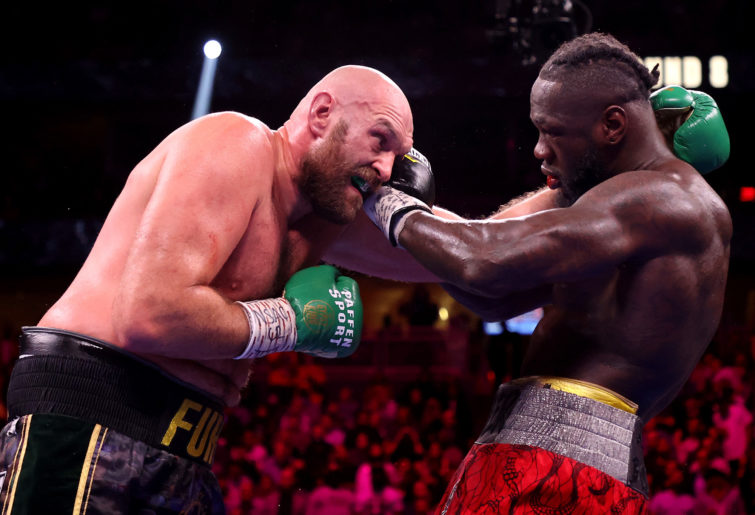
(Photo by Al Bello/Getty Images)
Lately he has started to morph into a boxer-puncher with genuine knockout power, evident against Deontay Wilder and Whyte.
Oleksandr Usyk is another good example of a pure boxer. Muhammed Ali was also one.
They rely on their footwork, skill and stamina to usually wear down their opponent. It is difficult for extremely large men to have the footwork, skill and stamina to be a pure boxer and that is one of the reason’s why Tyson Fury has claim to being an all-time great.
The pure boxer uses their reach via their jab to keep their opponent at a distance and uses combinations to wear down their opponent rather than relying on singular knockout punches.
With his reach, Holmes was widely regarded as having the best left jab of all time during his career.
We have since seen a man with an even longer reach emerge with an even better jab and I think you may know whom I am referring to.
Mike Tyson beat Holmes despite being much smaller. So it is settled. Mike Tyson was the greatest. Perhaps we should just hold that thought.
Let’s consider that and also go back in time to another diminutive heavyweight champion that fought with a swarmer style. A time when Rocky Marciano ruled the heavyweight division.
Here was a man even smaller than Mike Tyson. He was also five feet, ten inches tall but he weighed just a tick over 90 kilograms. Added to this, he had an even smaller reach of 68 inches.
Marciano has an amazing record, having retired without ever losing a fight.
For this reason, and due to a funny scene in the movie Coming to America, he has been immortalised in popular culture, arguably far beyond his actual capability.
His undefeated record is amazing though, and not just because he never lost.
It is because his body size was so unlikely to be dominant in a weight division where almost everyone naturally has a knockout punch within them. That is greatness.
But was it so amazing for him to be declared the absolute greatest?
Marciano’s reign was actually only for four years. This may come as a surprise to some considering his standing in popular culture as such a dominant heavyweight champion.
It is not a small amount of time to have been champion but it is also not that impressive.
Rocky Marciano gained his title at the age of 27 before defending his title an admirable, not amazing, six times, and retiring relatively early at 31 years of age.
His reign was nowhere near the length of the mammoth reigns of Joe Louis’ or Wladimir Klitschko’s in comparison.
Of course, both of these fighters did indeed lose some fights both early and late in their careers.
Perhaps had they been less cavalier early in their careers, and perhaps if they too retired at 31, it would have been one of them being a punchline in a My-T-Sharp barber shop.
The point is you can not judge boxing greatness on records alone. Nor from Eddie Murphy movies. That is just too simplistic.
Records, as well as popular culture, can be misleading.
To compare Rocky Marciano’s legacy we do need to ask whether his reign was in a golden age? It should be noted that no it really was not.
Again, this doesn’t prove anything but it is worth considering it.
He first cemented his right to be at least considered alongside the greats, just like Mike Tyson, because he once defeated a former true great.
In Rocky Marciano’s case he defeated Joe Louis, the great slugger, who many still consider the absolute greatest.
For those interested, the slugger style is a power puncher that does not usually employ much footwork to their boxing. Nor do they rely on much finesse or sophistication.
They also don’t aim to wear down their opponents, rather they generally aim to gain a knockout victory.
The prototypical contemporary slugger is Deontay Wilder, a man that knocked out 40 of his first 41 victories, the highest percentage of knockout victories in heavyweight history.
For those that have not been bothering to watch boxing for a while, and that rely on their boxing knowledge by watching nostalgic documentaries, such as When We Were Kings, think of George Foreman hitting the heavy bag. That is what a slugger does.
Like Larry Holmes, Joe Louis was bigger than a lot of other heavyweights of his era. He was six feet, two inches tall and also weighed in over the 100-kilogram mark.
Joe Louis had a 76-inch reach, which was far bigger than Rocky Marciano’s tiny reach in comparison.
Yet despite the size difference Rocky Marciano won that fight. That makes him the greater boxer right? Cue the Coming to America punchline.
Mike Tyson and Rocky Marciano defeated these former greats well past their respective primes.
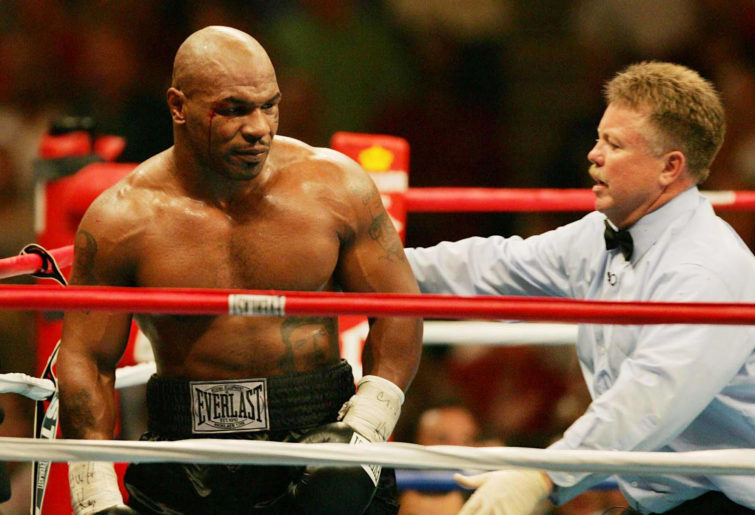
(Photo by Sean Dempsey – PA Images/PA Images via Getty Images)
More importantly both Larry Holmes and Joe Louis had not fought for two years prior to losing to their respective newcomers.
The truth is that these parallel stories were more a passing of a torch rather than a dethroning.
Now, we all know that a good big man will almost always beat a good smaller man, with all things being equal.
This works with one caveat. You can park the size-does-matter mantra, within reason, if indeed one of those fighters is under-prepared and/or outside their prime fighting years.
For Mike Tyson and Rocky Marciano this is exactly what happened when they won these respective fights. This is a perfect example of when size doesn’t matter.
Rocky Marciano was never considered a greater fighter than Joe Louis, by anyone that knows boxing. The reason is fairly obvious. He wasn’t.
I hate to say it but one of the old men played by Eddie Murphy in that movie didn’t know what he was talking about. Sorry to break it to you.
Curiously, Mike Tyson is considered to have been the greater boxer than the more accomplished Larry Holmes. I can’t for the life of me figure out why exactly.
Actually I can. Popular culture has a way of enhancing perceptions so that it becomes a reality, even when that perception is not deserved.
How can Mike Tyson’s stature in boxing be as highly regarded as it is considering the manner of his losses?
Who else did Mike Tyson defeat during his career that could justify such a high standing?
The answer is nobody really and that would not be a problem if he didn’t go on to be so decisively beaten so often.
He is so highly regarded as a boxer by the public because he was exciting to watch for that period in the 1980s, when no one could combat his style.
What was far more important to his legacy is that his performances in the ring transcended into popular culture, which has disproportionately perpetuated his greatness.
The average man or woman still believes the hype, so to speak.
After all, Evander Holyfield and Lennox Lewis did enough for even the most zealous of Mike Tyson fans to come to terms with the fact that he really wasn’t that good after all.
Their respective boxer-puncher styles, often referred to as the boxer-slugger style, is a hybrid of the pure boxer and slugger styles.
They were the perfect answer to Mike Tyson’s unique swarmer style.
The boxer-puncher style is by nature more adaptive than the other three major styles. In this case Mike Tyson’s flurry of punches could be absorbed before he was given a clip or a knockout punch.
Holyfield, in particular, kept clipping Mike Tyson whenever he pressed forward, nullifying his attempts to pressure his way to victory.
He never stood a chance and the swarmer style has become null and void as a heavyweight style since.
Unfortunately many Mike Tyson fans refuse to come to terms with these facts.
‘Holyfield and Lewis never fought Mike Tyson in his prime,’ they will say.
That makes little sense when it is considered that Evander Holyfield and Lennox Lewis are both older than Mike Tyson.
The reason he lost comes down to the fact that he was simply too small to deal with tough, patient and skilled boxers, regardless of style.
Even a relative no name James ‘Buster’ Douglas fought and defeated Mike Tyson because he had worked all this out for himself.
What has been well documented after the fact is that Douglas was completely convinced he would win that fight. He had a genuine belief that he had worked out how to counter Mike Tyson and he proved he was correct.
Before we get the normal ‘but Mike Tyson was out of sorts that night in Tokyo’, let’s not forget that Mike Tyson did knock Douglas down at one point in that fight.
He was not out of sorts at all. Not really.
He was just outboxed by a bigger boxer that wasn’t intimidated, that knew how to combat his style. Mike Tyson capitulated as a result.
We saw the same thing occur when he lost to Holyfield and Lewis. It’s all there for all to see. You just have to search for it on YouTube.
Fast forward to today and not one fighter in the heavyweight division is that small anymore and not one heavyweight uses that style.
The swarmer became extinct in the heavyweight division simply due to the fact that the division is now the land of the giants.
Today’s giants, as mentioned earlier, are no longer the cumbersome easybeats of yesteryear.
That doesn’t take away from Mike Tyson being one of the all-time great swarmer-style fighters. Perhaps he was the very best and if so, he will always remain so.
Because in this day and age, in the heavyweight division with today’s giants, Mike Tyson would struggle to win a fight.
For that reason, Mike Tyson has no claim to being the greatest of all time. To be honest, he is not even close.
Now where does Tyson Fury fit into all this?
We will have to wait for Part 2.
































































































